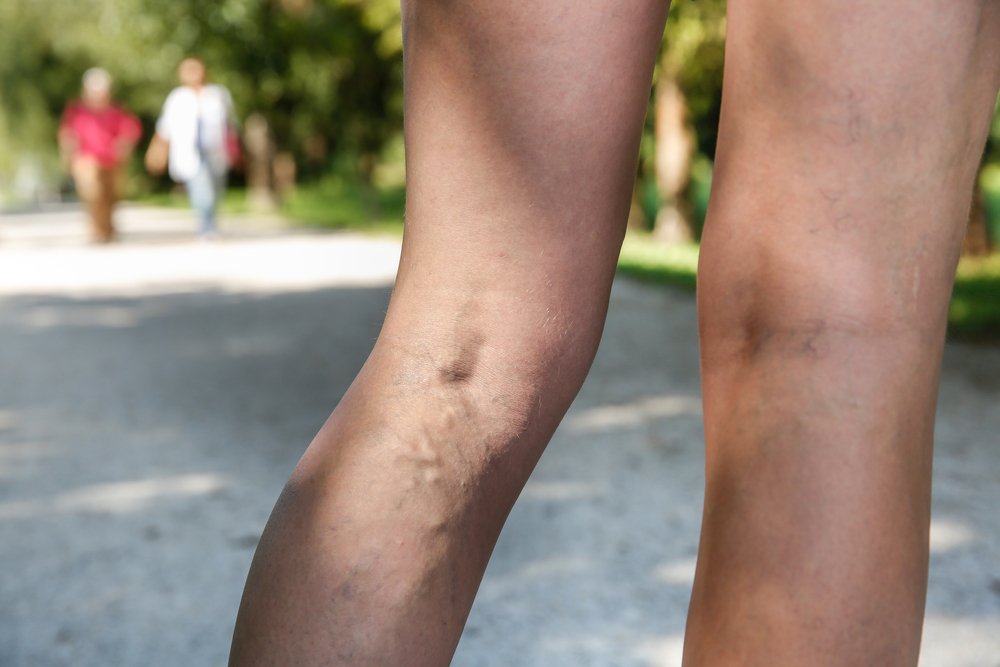 Spider veins might appear as delicate as the name suggests, but for those who have them, these tiny veins that form a web-like pattern on the skin can be a significant source of self-consciousness and discomfort. This detailed FAQ post is aimed at demystifying all things spider veins related, addressing the common misconceptions, and equipping our readers with a better understanding of this common vascular issue.
Spider veins might appear as delicate as the name suggests, but for those who have them, these tiny veins that form a web-like pattern on the skin can be a significant source of self-consciousness and discomfort. This detailed FAQ post is aimed at demystifying all things spider veins related, addressing the common misconceptions, and equipping our readers with a better understanding of this common vascular issue.
Introduction
Spider veins, also known as telangiectasias, are clusters of tiny blood vessels close to the surface of the skin. They can be red, blue or purple, and often resemble spiderwebs or tree branches. Although they are generally not harmful, many seek treatment to alleviate any pain and discomfort and to improve their appearance.
There are various myths surrounding spider veins — from them being exclusively a cosmetic issue to having a direct relation with varicose veins. However, as we will explore, spider veins can have underlying health implications and addressing them is more than just a beauty concern.
What Are Spider Veins?
Defining Spider Veins
Spider veins are a milder form of varicose veins, which are larger, bulging blood vessels. They can appear red or blue and are most commonly found on the legs or face. Unlike varicose veins, spider veins are typically not painful but can cause aching in the legs.
Differentiating From Varicose Veins
The most distinguishing feature of spider veins from varicose veins is their size and location. Spider veins are smaller, closer to the skin's surface, and are often closer to the red color spectrum. Varicose veins, on the other hand, are larger, deeper in the skin, can cause more discomfort, and have a swollen, twisted appearance.
FAQs About Spider Veins
1. What are the Risk Factors for Spider Veins?
Heredity
Genetics play a significant role in the development of spider veins. If your parents or close family members had them, you are more likely to acquire them as well.
Gender
Women are more prone to spider veins due to hormonal changes during pregnancy, pre-menstruation, and menopause. Additionally, taking birth control pills can increase the risk.
2. Can Spider Veins Be Prevented?
While you cannot completely prevent the development of spider veins, there are measures you can take to reduce the chances or slow their progression.
Lifestyle Suggestions
- Regular exercise can improve circulation.
- Maintain a healthy weight to avoid added pressure on the veins.
- Elevate your legs when sitting or sleeping to reduce pressure.
- Don't cross your legs for long periods while sitting.
- Avoid standing or sitting for long periods without taking breaks.
3. What Are the Treatment Options Available?
Sclerotherapy
The most common treatment for spider veins is sclerotherapy. A solution is injected into the veins, causing them to collapse and fade from view.
Laser Therapy
For smaller spider veins, laser therapy can be used. A strong beam of light is applied to the vein, which causes the vein to fade slowly and eventually disappear.
4. Are Spider Veins a Sign of Underlying Health Issues?
In some cases, spider veins can be a sign of an underlying circulatory problem. It is important to seek medical advice if you develop spider veins, especially if they are accompanied by swelling, aching, or skin changes in the legs.
5. How Can Lifestyle Changes Help Manage Spider Veins?
Diet and Exercise
A healthy diet and regular exercise can improve blood flow and prevent the development of spider veins.
Compression Stockings
Wearing compression stockings can help reduce the symptoms associated with spider veins, such as pain and swelling.
Addressing Common Misconceptions
They Are Just a Cosmetic Issue
While spider veins are often a cosmetic concern, they can lead to more serious health problems. They can sometimes be an indication of circulatory issues, which, if left untreated, can lead to more severe types of vein diseases.
They Can Be Cured with Creams or Lotions
Unfortunately, over-the-counter creams and lotions for spider veins generally do not work. Laser therapy or sclerotherapy are the most effective treatments for spider veins.
Only Elderly People Get Them
While spider veins are more likely to occur in older individuals, they can develop at any age, depending on various factors like genetics and lifestyle.
Conclusion
For those suffering from spider veins, addressing them is more than just a cosmetic choice. Seeking professional medical advice can help evaluate and treat underlying venous health concerns, improve quality of life, and prevent potential complications. Remember, even the smallest veins can carry significant information about your health, and it's important to pay attention to the messages your body is sending.
If you or someone you know is struggling with spider veins, don't hesitate to call us to make an appointment with our Vascular Surgeon; Dr. Gulshan Sethi. With the right care, you can achieve clearer and healthier-looking skin, as well as peace of mind regarding your vascular health.
